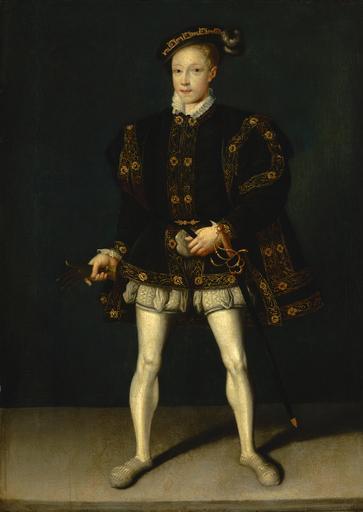MAKE A MEME
View Large Image

| View Original: | Edward_VI,_King_of_England,_son_of_Henry_VIII_and_Jane_Seymour.jpg (920x1299) | |||
| Download: | Original | Medium | Small | Thumb |
| Courtesy of: | www.flickr.com | More Like This | ||
| Keywords: edward vi edwardvi henry vii henryvii jane seymour janeseymour king of england kingofengland tudors portrait 16th century 16thcentury britain united kingdom unitedkingdom monochrome Phillip Mould: "his portrait of Edward VI is a later copy of Guillim Scrots’ c.1551 full-length portrait, which was the last portrait for which the king sat. Versions are in the Royal Collection and the Louvre, the latter having been sent to the court of Henry II. Scrots had been court painter to the Regent of the Netherlands, Mary of Hungary, and was recruited by Henry VIII as Holbein's successor at the close of 1545. His work, covering less than 10 years in this country, has never been satisfactorily reconstructed. One certain work that can be associated with him from this period is the distorted perspective portrait of Edward dated 1546 (National Portrait Gallery, London). This bore the signature ''Guilhelmus pingebat'' as late as 1713. The present small panel was probably painted in the mid 19th Century." Phillip Mould: "his portrait of Edward VI is a later copy of Guillim Scrots’ c.1551 full-length portrait, which was the last portrait for which the king sat. Versions are in the Royal Collection and the Louvre, the latter having been sent to the court of Henry II. Scrots had been court painter to the Regent of the Netherlands, Mary of Hungary, and was recruited by Henry VIII as Holbein's successor at the close of 1545. His work, covering less than 10 years in this country, has never been satisfactorily reconstructed. One certain work that can be associated with him from this period is the distorted perspective portrait of Edward dated 1546 (National Portrait Gallery, London). This bore the signature ''Guilhelmus pingebat'' as late as 1713. The present small panel was probably painted in the mid 19th Century." | ||||